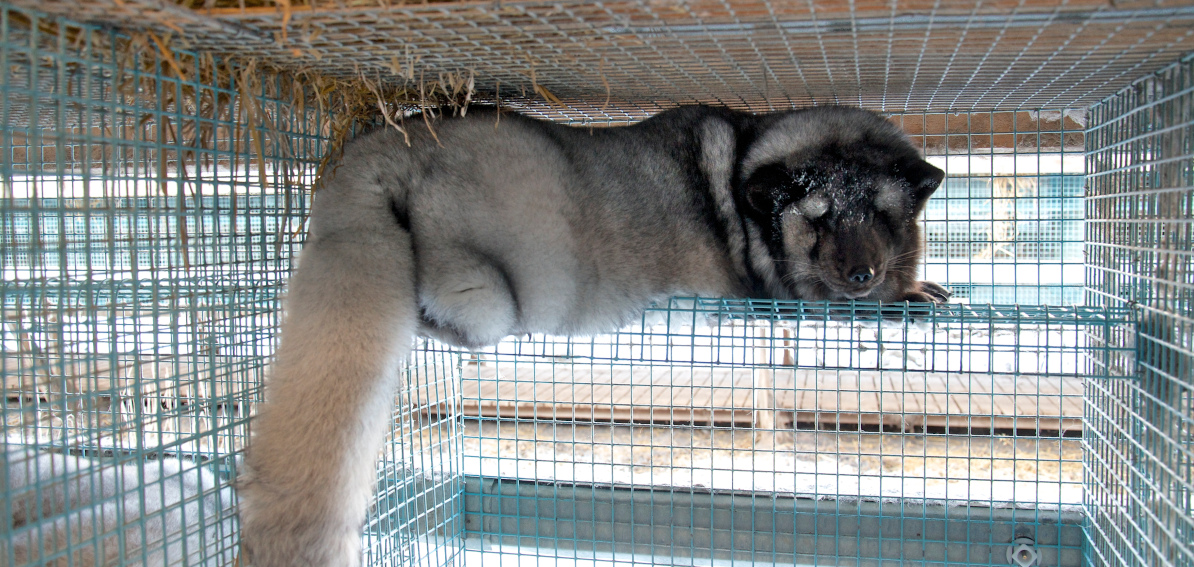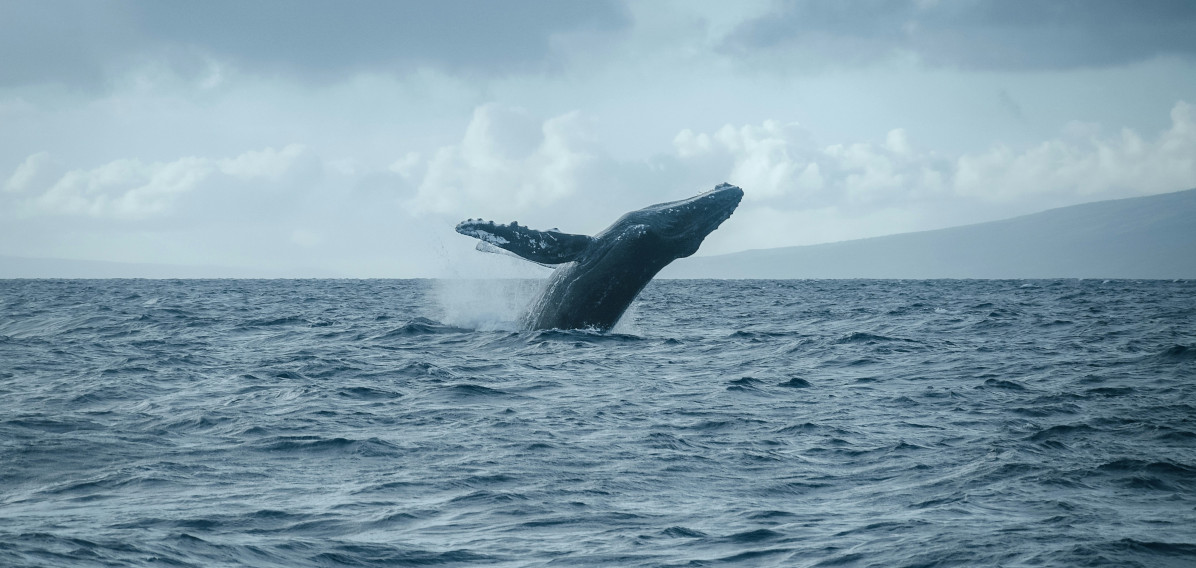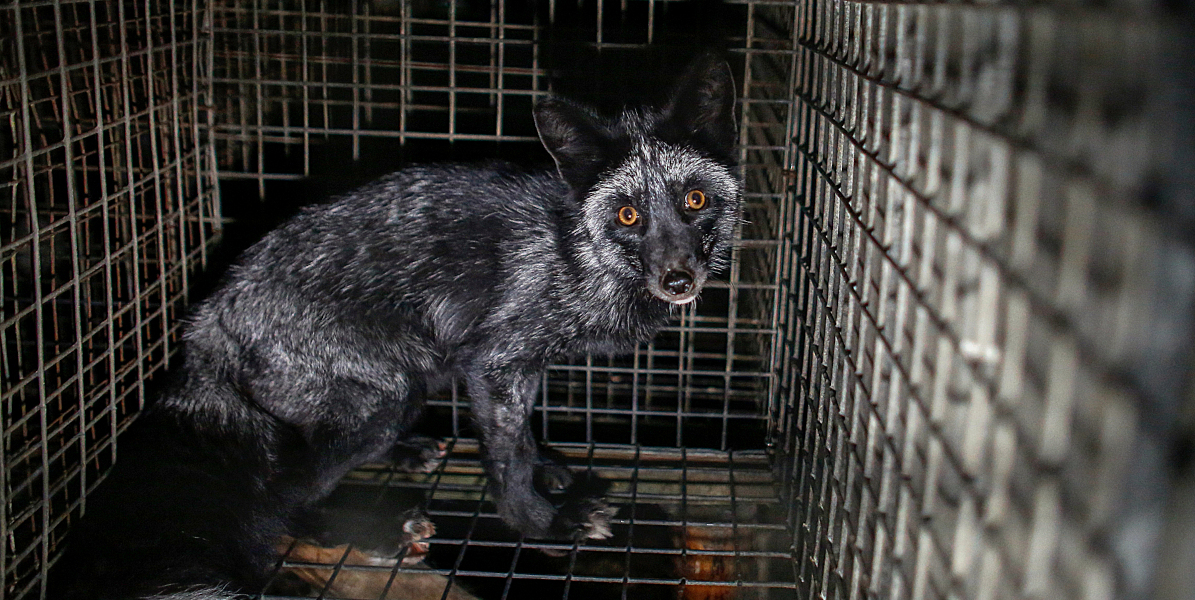Fish feel pain. We need to improve our understanding of fish, which means we need more scientific research, to transform our thinking patterns, and to vastly expand the confines of our imagination. After all, their habitat and ways of expressing themselves are alien to us.
There is growing awareness of the pain and suffering caused by industrial fishing. Huge amounts of fish are crushed or suffocated to death in trawls. People are also concerned about the cramped conditions and the ways farmed fish are stunned.
Some may think that it is only a reflex reaction when a fish wriggles on a fish hook. A fish cannot have felt any pain, because the same fish may eat the same bait a second time. We therefore acknowledge that fish can feel pain in some situations, but in others we are somewhat blind to it. This situation is not helped by the fact that, to us, fish appear mute. They also lack the facial expressions we might recognise from mammals.
We recognise that a dog feels pain when it yelps or grimaces. When it comes to fish, it can be difficult to perceive their pain and suffering. But they do communicate pain, they just have other means for it. Instead of sounds or facial expressions, fish may change their behaviour. To understand fish, we must first question our established ways of thinking and form a fresh perspective.
According to animal philosopher Elisa Aaltola, it may not be possible to expand our empathy to include fish without using our imagination. It is easier for us to feel empathy towards companion animals, for example, because we interact with them and believe that they can feel pain. However, the latest scientific research asserts that fish experience pain, suffering and pleasure just as much as any other animal. These underwater creatures deserve our attention and empathy.
Fish feel pleasure
Fish did not stop evolving in the sea just because some of them moved to land around 360 million years ago. Advanced technology has enabled researchers to discover that fish have characteristics previously thought exclusive to mammals and birds. One example is their well-developed sensory system.
Their senses are quite unique and adapted to life in water, and there are differences between various species of fish. Fish use their senses to observe their surroundings, navigate, find food, and communicate with each other. They exchange information on species, gender, age, social status, distances, and nearby predatory fish. Modern science has shown that the cognitive skills of fish are more developed than previously thought.
The ability to communicate is considered evidence of animal consciousness. In other words, fish are aware of the world and the protagonists of their own life stories – that they recognise each other as individuals and know who they prefer to spend time with. Fish communicate pain to each other in various ways, for example through pheromones. For example, several species of fish learn skills related to hunting and socialisation by observing other fish. The ability to learn, in turn, requires memory. Further, some species of fish, such as Salmonidae, have been observed to exhibit playing behaviour, which stimulates the release of endorphins.
Fish are social animals, just like humans and other mammals. They also have a sophisticated sense of touch. Indeed, some species of fish are very sensitive to touch: divers have made use of this when assisting sharks. They have calmed the animals down by petting them, which has enabled them to remove hooks from their mouths.
But people still treat fish as if they are unable to experience pain or suffering. Professor Outi Vainio, an expert in animal pain experience, wonders why people question the existence of a feeling that helps animals protect their bodies. The ability to feel pain is critical to survival.

The pain felt by fish should not be underestimated
Most researchers have concluded that fish feel a similar kind of pain to that felt by other animals. There is also growing evidence that fish experience conscious suffering caused by strong experiences of fear, pain or physical harm.
When it comes to defining consciousness, even a primitive emotional consciousness is considered enough for a being to be able to experience feelings and suffering. Fish could even be classified as more highly developed because of their long evolution. In animals, the expression or strength of feelings are not dependent on the complexity of the brain structure. Despite their small brains, fish of various species have been found to have the brain structures and nervous systems required to create consciousness, emotions, and intentional activity.
“We desperately seek to identify similarities between the brain structures of humans and other species so we can recognise certain skills in animals. But the nature of evolution means that different kinds of brain physiological structures can achieve the same cognitive space”, Vainio explained at the launch of Animalia’s Kalarakas fish rights campaign.
In mammals, the conscious feeling of pain happens in the neocortex. Researchers have shown that the lack of neocortex does not imply fish cannot feel pain or suffering. In fish, pain is dealt with another area of the brain, the telencephalon, which is equivalent to the neocortex.
Researchers have also found structures in the telencephalon that are equivalent to the functioning of the limbic system in mammals. Fish also have a nervous system that transmits pain. They have pain receptors around their bodies, as well as nerve fibres – which mammals also have – and are required to sense pain.
Even if science does not yet have the means to compare the amount of pain experienced by animals and humans, this is no reason to understate the pain experienced by fish. We should remember that there are still many things we do not know about human consciousness either. For example, we do know how the human brain processes pain, but our subjective experiences of pain are unique.
When there are no words for pain and suffering
Fish brains react to pain in a similar way to mammal brains. Pain can also be assessed by observing the behaviour of fish. Researchers have used behavioural experiments to determine symptoms of pain and degraded welfare in fish. Examples include rapid breathing or “panting”, and refraining from eating.
Researchers Victoria Braithwaite, Mike Gentle and Lynne Sneddon observed behavioural changes in trout after injecting acetic acid and apitoxin in their snouts. The behaviour of the fish in the experiment showed that they felt pain. They started to “pant”. Several of them also rubbed the sore spot against the bottom of the tank in an attempt to alleviate the pain. The fish also lost their appetite and only resumed feeding after several hours.
In other words, in situations thought to cause pain, fish behave similarly to humans and other mammals. They breathe more quickly and lose their appetite. It has also been observed that if the pain persists, fish start to rock back and forth, just like mammals. The movement makes the body release small amounts of endorphins that help to cope with the pain.
The researchers also showed that the pain was not a mere physiological change, such as an increase in the quickness of breathing, but that it affected the cognitive state, or the attentiveness, of the fish. When an animal is in deep pain, it focuses on the pain itself and loses interest in new things and changes in the environment.
To prove this, Braithwaite, Gentle and Sneddon dropped a bright Lego tower into the tank. Trout will typically avoid an unfamiliar object suddenly introduced to their environment. When the scientists gave the fish an injection of acetic acid, they were not disturbed by the tower, and swam past it as if it were not there. They were distracted by their own suffering. By contrast, when the fish were subsequently injected with morphine for the pain, they resumed the avoidant behaviour.
The analgesic, or painkiller, given to the fish helped to relieve their pain, just like it does in mammals. Biologist Helena Telkänranta argues that if an analgesic makes an animal cease their pain behaviour in an experiment involving pain, then the pain is very probably a genuine experience rather than a mere robotic reflex.
Behavioural experiments on fish also show that fish experience fear and stress. They have been observed avoiding situations and places that cause them pain, especially if the experience recurs often. Why, then, is it said that a fish might eat the same bait again even after having been released? Hunger is thought to be the overriding motivation. But researchers have also found out that carps and pikes that were caught and subsequently released have gone on to avoid the bait for up to three years.
Working to improve the lives of fish
The ability of fish to feel pain has been studied widely in many countries. The notion that they cannot feel pain is outdated. The European Food Safety Authority (EFSA) is among the high-ranking institutions that support the notion that fish do indeed feel pain.
Researchers have observed pain in fish by studying their brains, nervous systems, and behaviour. It is important to study this topic further so that we can finally change our potentially deep-rooted ways of thinking and accept that fish, too, have a consciousness.
Studies into animal consciousness are still at an early stage, although several internationally known brain researchers have already signed a document which states that the absence of a cerebral cortex does not preclude an animal from recognising its own existence. Expanding our knowledge and changing our ways of thinking has allowed us to acknowledge the consciousness and capabilities of birds, even though they most likely do not have a cerebral cortex, or it is very thin.
We also need more information on what each individual fish feels, and how we could increase their welfare – because we are increasingly aware that intensive rearing of fish in farms for food causes major welfare problems for fish. Both commercial and recreational fishers should pay more attention to how fish are treated and handled, too.
Perhaps we are hesitant to study fish welfare because, after all, ignorance is bliss. Our increasing knowledge demands major changes to the ways we currently treat fish. Fish should be treated as individuals with the right to enjoy species-appropriate behaviour and a life without pain and stress. They do not want to die any more than any other animals do. They deliberately resist and try to escape any unpleasant situation. Fish are afraid of pain, and want to get away from it.
At the launch of Animalia’s Kalarakas fish rights campaign, Aaltola reminded the audience that the answer to the question of how to treat fish is in fact quite simple:
“If fish do indeed have a mind and an ability to consciously experience reality and their own existence, then it is our ethical imperative to act in ways which promote their positive experiences and avoid causing harm, pain and suffering.”
Translation: Johanna Koskinen.
Pictures: StockSnap.
References (each link will open in a new tab)
Animalia’s video: Kalarakas-kampanjan avajaiset (in Finnish).
Eläinten hyvinvointikeskus: Kalan kipu on todellista (in Finnish).
Eläinten hyvinvointikeskus: Kaloillakin on tuntemuksensa (in Finnish).
Kaunisto, Noora: Eläinmieli luonnontieteellisestä näkökulmasta (in Finnish).
Luonnonvarakeskus: Pitäisikö pyydystä ja päästä -kalastus kieltää uudessa eläinsuojelulaissa? (in Finnish)
Tiede-lehti: Kalaankin koskee (in Finnish).
Tiede-lehti: Mistä tietää, että eläimeen sattuu? (in Finnish)
Tiede-lehti: Emme ole yksin (in Finnish).
The University of Sydney: Fisheries and Fish Welfare: an Uncanny Silence.
Aaltola, Elisa. 2013. Johdatus eläinfilosofiaan. Gaudeamus.
Balcombe, Jonathan. 2016. What a Fish Knows. The Inner Lives of Our Underwater Cousins. Oneworld Publications.
Telkänranta, Helena. 2015. Millaista on olla eläin? Suomalaisen Kirjallisuuden Seura.






